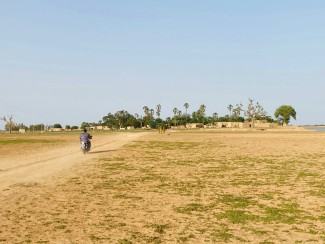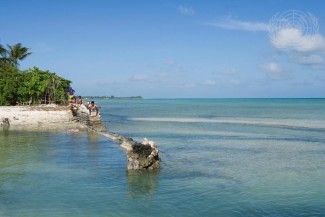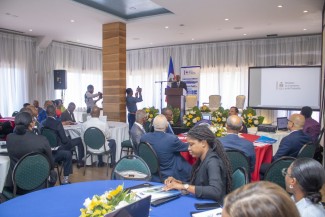With climate change on everyone’s mind ahead of the 2021 United Nations Climate Change Conference (COP26), what are the key issues on the table for the world’s least developed countries (LDCs)?
Adjusting to climate change is vital for LDCs
LDCs pump out insignificant amounts of carbon into the atmosphere, yet their populations stand to be hit the hardest as a result of climate change. LDC economies heavily rely on agriculture, which is highly vulnerable in the face of higher temperatures, more frequent floods and rising sea levels. There are many other reasons why LDCs are exposed such as having inadequate resilience and recovery infrastructure in place and lacking the required investment. There is also a lack of policies, skills and investment to nurture the transfer towards new technology to make the necessary adjustments. Internal conflict, political instability, food security and health issues added into the mix only make things worse. Furthermore, measures to combat climate change in developed countries such as the EU’s current iteration of the Carbon Border Adjustment Mechanism (CBAM) may very well hit some LDCs’ limited export baskets with rising trade costs that they can scarcely afford.
What could quickly help LDCs adjust? Climate finance. Is it available for LDCs? Not nearly enough of it. To date, developed country commitments to climate finance have fallen short of the USD100 billion a year by 2020 target in the Paris Agreement. Also, accessing the mosaic of climate finance that does exist can often be a labyrinth to traverse. Some issues to access climate finance, as highlighted by the Independent Expert Group on Climate Finance, include the overuse of non-concessional finance, not aligning the finance with national budgets, poor financial management systems in LDCs and often accessing the finance can take even longer than election cycles. The South African Institute of International Affairs highlights other issues that stem from the donors’ side such as complexity given the wide variation of procedures and a lack of capacity support to help navigate donor requirements.
What else could help? Aid for Trade and programmes like the Enhanced Integrated Framework (EIF) could certainly provide some additional support to complement ongoing climate finance initiatives. As a key international support mechanism, Aid for Trade has disbursed an estimated USD 400 billion since 2006. It has the potential to help move LDC growth and exports away from carbon emissions towards more climate protective markets.
Linking trade and climate change priorities more tightly
For countries to access Aid for Trade funding to combat climate change, a clear link is needed between the LDC’s trade policies and their climate change policies. For example, having their EIF Diagnostic Trade Integration Studies (DTIS) or national trade policies aligned where appropriate to their Nationally Determined Contributions (NDCs) for climate change, as stemming from the Paris Agreement, could be a start. Not all NDCs will have a direct trade link but many will, with issues relating to agriculture, forestry, land use, extractives, energy, transport etc. Similarly, not all DTIS recommendations will have a direct climate change link, but many will. Recent EIF DTISs since 2016 have more environmental analysis and it is hoped that new DTISs will benefit from ongoing EIF, ODI and IIED research into aligning climate and trade strategies in LDCs.
LDCs are already developing updated Nationally Determined Contributions and National Adaptation Plans as part of the Paris Agreement. Aid for Trade is well-placed to provide additional support to address trade related NDC priorities and thus complement limited climate finance. Issues ranging from CBAM exemptions for LDCs to establishing a global carbon price may be gaining momentum and LDCs can be proactive in parallel while these issues are negotiated by G7 or G20 countries. The support towards diversification and adjustment can start to take place right now and, if LDCs demand it, Aid for Trade can help.
Where can Aid for Trade help? Ongoing EIF, ODI and IIED research shows that LDCs urgently need climate-smart infrastructure for transport and energy generation, and they need to diversify and expand into green value chains - local, regional and global. Other areas where support is needed are the participation of LDCs in carbon markets, their adoption of carbon labelling and an increased understanding of carbon content of, not only goods, but services too. There is also a wide range of technology transfer issues and, here trade must certainly play a central role in the solution.
The time is now
The clock is ticking. Strong and sustained reductions in emissions of CO2 and other greenhouse gases would limit climate change but it would still take up to 30 years to see global temperatures stabilize. Stakes are high for the COP26 and G20 discussions this year, with great outcomes for the planet and LDCs if successful. If they are not, if they fall victim to technicalities and politics or even if they are only partially successful, there is nothing to stop the LDCs working together with trade and climate change development partners, right now.
EIF, ODI and IIED will host a public event on Friday 29 October 2021 called ‘Securing climate-compatible trade for the most vulnerable countries.’ Find out more about the event here.
If you would like to reuse any material published here, please let us know by sending an email to EIF Communications: eifcommunications@wto.org.



